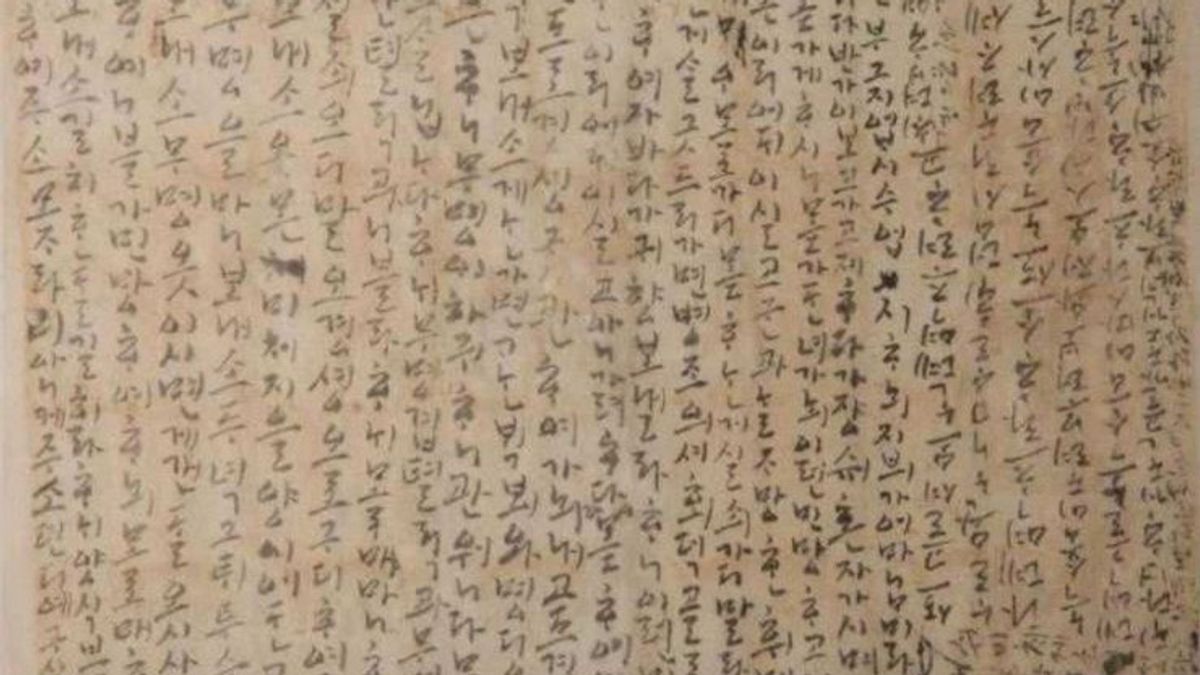JAKARTA - A more than 500-year-old letter written in Hangeul language will be designated a national treasure, as it shows the use of the Korean alphabet in the late 15th century, just decades after its development, according to the Cultural Heritage Administration (CHA), Friday.
The administration announced its plan to establish "Hageul's letter by Na Sin-geol," which is believed to be the oldest letter written in Hangeul, as official treasure, meaning that it will be considered an important tangible cultural heritage, will be granted heirloom status, second highest level after the national heirloom which is the highest level.
The two-page letter was sent by Na (1461-1524), a Joseon Royal military officer (1392-1910), to his wife Shin Chang-maeng.
He is thought to have written the letter in the 1490s while serving as a low-ranking officer in Hamgyeong Province - currently located in North Korea - considering the letter uses the word "Yeogando", the old name of Hamgyeong Province used between 1470 and 1498, and that he was stationed in the region in the 1490s.
The letter, which was folded repeatedly, was found at Shin's grave in Daejeon in 2011, along with 40 other artifacts including clothes.
In the letter, Na expressed his longing for his mother, wife and children, ordered his wife to send him some clothes. He also asked him to take care of other family and agricultural problems.
Given that Hangeul was developed by King Sejong in 1443 and announced in the years 1446, the letter, possibly written in the 1490s, suggests that the new alphabet has spread across the country, and was used by low-level officials about 45-50 years after the development of Hangeul.
It is known that Hangeul was mainly used by women at the beginning of the Joseon era. However, the use of Hangeul by Na who was fluent, showed men also often used the Hangeul alphabet at that time. It also offers a glimpse of linguistic life in the 15th century, according to CHA.
"Previously, through Joseon's royal documents, it was difficult to know how widely Hangeul used among ordinary people. However, the letter proved that Hangeul was widely accepted and well received by these people in their daily lives," CHA said in a press release., reported the Korea Times January 2.
"The letter can also be used to study the lives of ordinary people, agriculture, women's lives and clothing from the early Joseon era. It has significant academic and historical values as linguistic historical material about Hangeul's announcement," CHA completed.
The English, Chinese, Japanese, Arabic, and French versions are automatically generated by the AI. So there may still be inaccuracies in translating, please always see Indonesian as our main language. (system supported by DigitalSiber.id)













